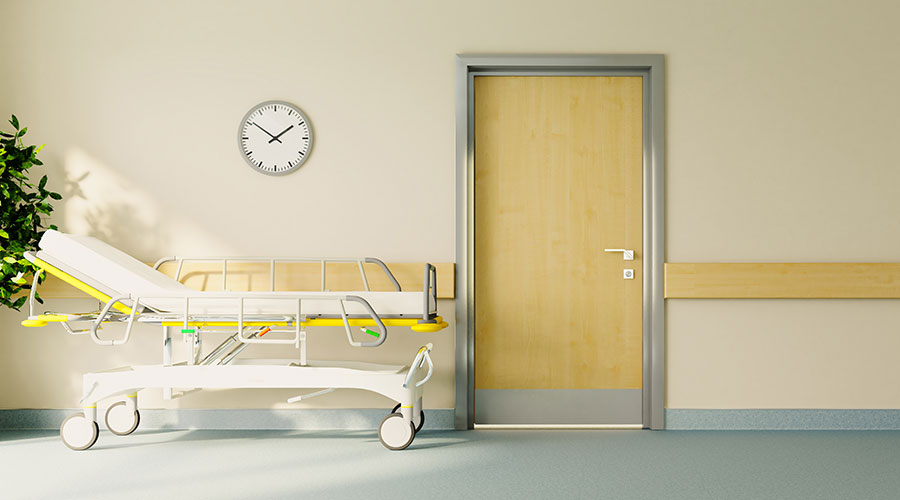Hands Off: How Hands-Free Doors Help Reduce Pathogen Transmission

Door manufacturers discuss hands-free doors and how they aid in reducing germ spread.
There are multiple surfaces that get touched regularly in healthcare facilities, which can contribute to the spread of germs. One of these commonly touched surfaces is a door, as occupants will frequently touch them to open them. To reduce the chance of germ transmission, hands-free door technology was introduced. In this manufacturer roundtable, Healthcare Facilities Today speaks with door manufacturers about how hands-free doors help reduce the chance of spreading germs in a healthcare facility.
How can hands-free doors help reduce the chance of transmitting pathogens in a healthcare facility?
“Hands-free operators reduce touchpoints with one of the most frequently contacted surfaces in a building, door handles. Wave sensors, foot pedals or other hands-free actuators eliminate the need for hand touches on door handles or operators. This has obvious benefits in areas where eliminating pathogens is essential (operating rooms, procedure rooms, NICU, etc.), but there are also significant benefits for other high traffic areas such as restrooms, utility rooms or culinary areas with high traffic and high cleaning needs.”
— Tysen Gannon, business development and marketing consultant, AD Systems
“Hands-free, automatically operated doors are a tried-and-true asset in the healthcare space that are known to help curtail the spread of pathogens throughout the building:
- Frequently touched and infected contact points are reduced by eliminating the need for door handles and knobs. Without these contact points, there are fewer opportunities to spread disease.
- Strategic usage and locations of automatic doors can intelligently compartmentalize busy healthcare environments to control the flow of pathogens between different areas. Even better, doors that have been tested and demonstrate high performance regarding air leakage (ASTM E283, for example) can further control the exchange of infected air spaces.
- Automatic doors will also simplify operational logistics and allow people and equipment traffic to flow more freely, allowing patient care to be provided more efficiently.”
— Brian Ha, product manager, STANLEY Access Technologies
“Healthcare facilities are hotspots for potential infections. Automatic doors equipped with motion sensors or touchless access control reduce the spread of germs, as they eliminate the need for patients, staff and visitors to touch door handles.
Automatic doors supplied with overhead activation sensors or touchless activation switches (wave here to open) maintain a barrier between clean and potentially contaminated areas, reducing the risk of cross-contamination. In healthcare settings, isolation rooms or clean rooms are critical for patients with contagious diseases. Automatic doors with airtight seals help maintain isolation protocols by minimizing the risk of airborne transmission.”
— Ashley Estrada, product manager, Horton Automatics
Jeff Wardon, Jr. is the assistant editor for the facilities market.
The post "Hands Off: How Hands-Free Doors Help Reduce Pathogen Transmission" appeared first on Healthcare Facilities Today

